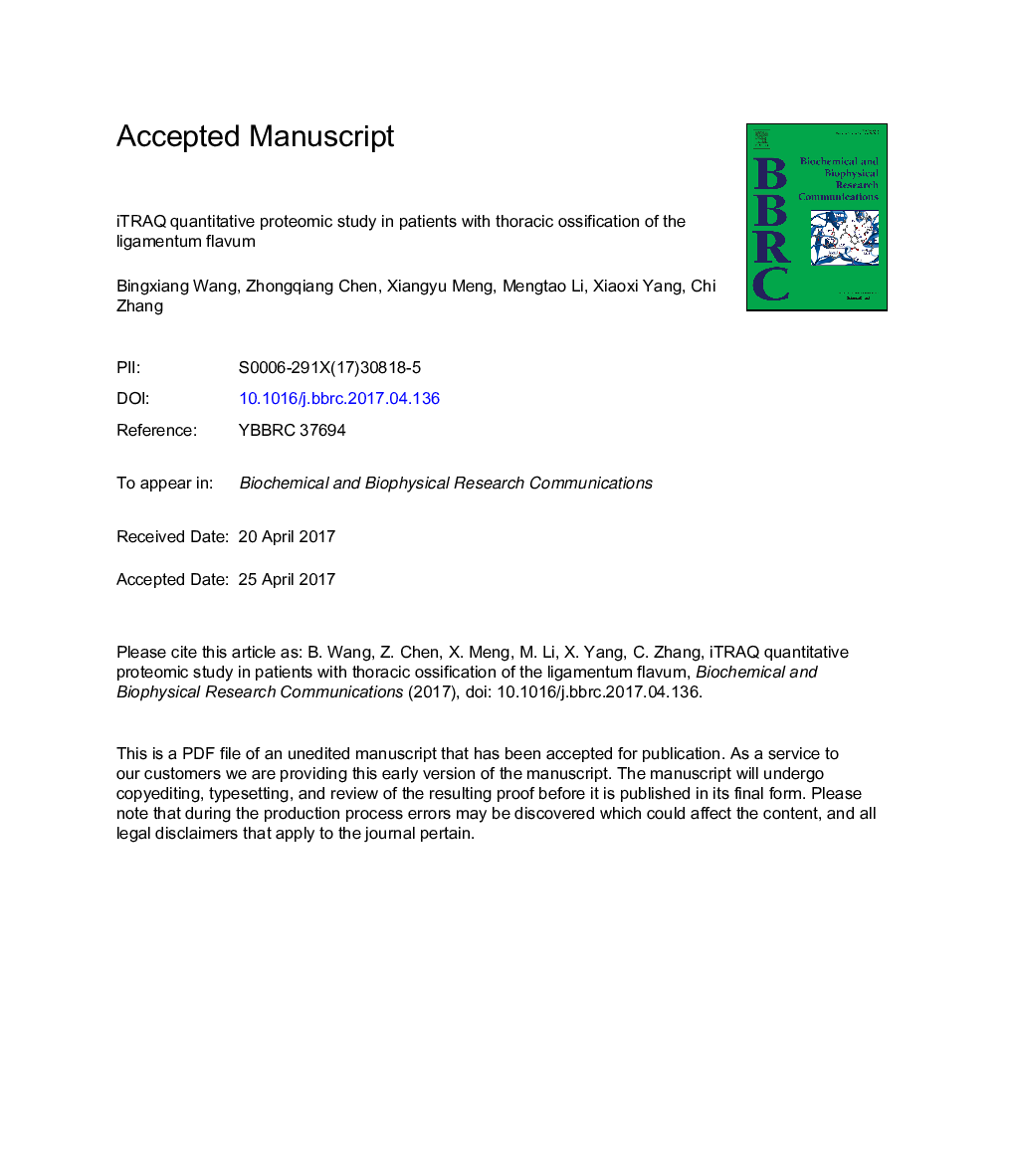| Article ID | Journal | Published Year | Pages | File Type |
|---|---|---|---|---|
| 5505681 | Biochemical and Biophysical Research Communications | 2017 | 20 Pages |
Abstract
Thoracic ossification of the ligamentum flavum (TOLF) is a unique disease with ectopic ossification, and is a major cause of thoracic spinal stenosis and myelopathy. However, the underlying etiology remains largely unknown. In this study, the ligamentum flavum was systematically analyzed in TOLF patients by using comprehensive iTRAQ labeled quantitative proteomics. Among 1285 detected proteins, there were 282 proteins identified to be differentially expressed. The Gene Ontology (GO) analysis regarding functional annotation of proteins consists of the following three aspects: the biological process, the molecular function, and the cellular components. The function clustering analysis revealed that ten of the above proteins are related to inflammation, such as tumor necrosis factor (TNF). This finding was subsequently validated by ELISA, which indicated that serum TNF-α of TOLF patients was significantly higher compared with the control group. To address the effect of TNF-α on ossification-related gene expression, we purified and cultured primary cells from thoracic ligamentum flavum of patients with TOLF. TNF-α was then used to stimulate cells. RNA was isolated and analyzed by RT-PCR. Our results showed that TNF-α was able to induce the expressions of osteoblast-specific transcription factor Osterix (Osx) in ligamentum flavum cells, suggesting that it can promote osteoblast differentiation. In addition, as the Osx downstream osteoblast genes OCN and ALP were also activated by TNF-α. This is the first proteomic study to identify inflammation factors such as TNF-α involved in ossified ligamentum flavum in TOLF, which may contribute to a better understanding of the cause of TOLF.
Related Topics
Life Sciences
Biochemistry, Genetics and Molecular Biology
Biochemistry
Authors
Bingxiang Wang, Zhongqiang Chen, Xiangyu Meng, Mengtao Li, Xiaoxi Yang, Chi Zhang,
